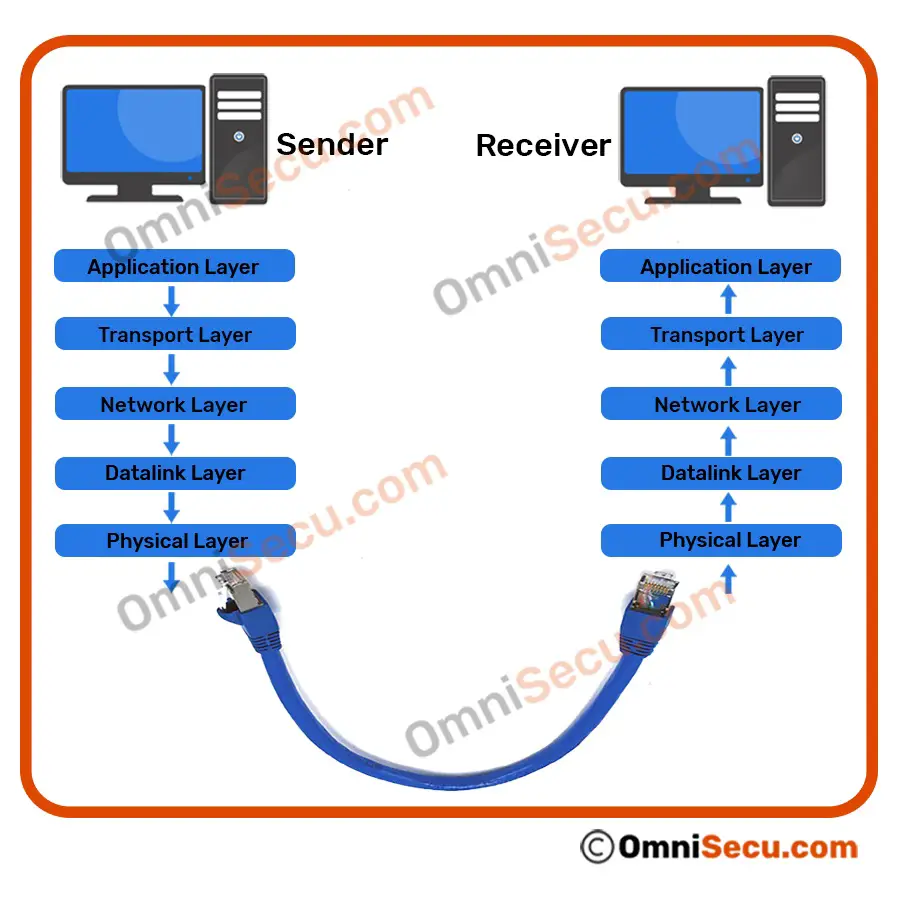How data is moved through different layers of TCP/IP model at sending and receiving computers
When moved down from Application layer through each layer of TCP/IP model at sending computer, layer protocols add some form of information as header. Datalink layer adds a trailer also. Finally, the data is placed as a stream of bits over network cable wire.
When the data is received at receiving computer, as stream of bit from wire, each layer removes the header information and use it for passing over to next high layer or to reassemble the data. Finally, the data sent from the sending computer is passed up to the Application layer at the receiving computer.
The packing and unpacking of data at different layers of TCP/IP model is called as Encapsulation and Decapsulation.
Following image shows how data from Application layer is moved down through different layers of TCP/IP model at sending computer and moved up through different layers of TCP/IP model to reach Application layer at receiving computer.

To get more wider view about different layers of TCP/IP protocol stack and how they operate together, please visit and learn below lessons in order.
- Five layered TCP/IP model
- How data is moved through different layers of TCP/IP model at sending and receiving computers
- Name of data packets at different layers of TCP/IP model
- TCP/IP Encapsulation and Decapsulation
- Application Layer (Layer 5)
- Transport Layer (Layer 4)
- Network Layer (Layer 3)
- Datalink Layer (Layer 2)
- Physical Layer (Layer 1)